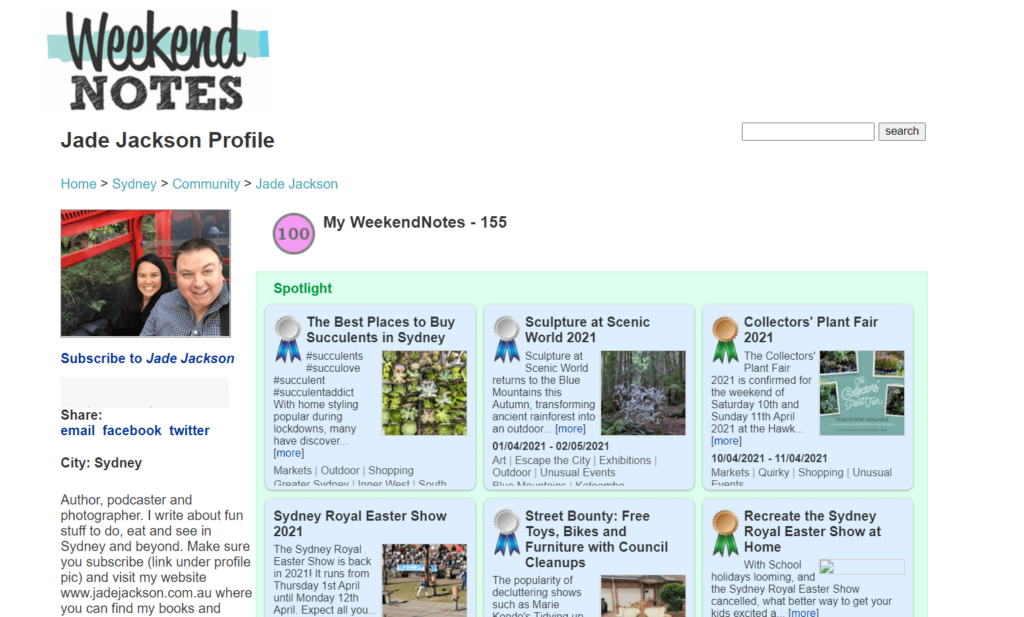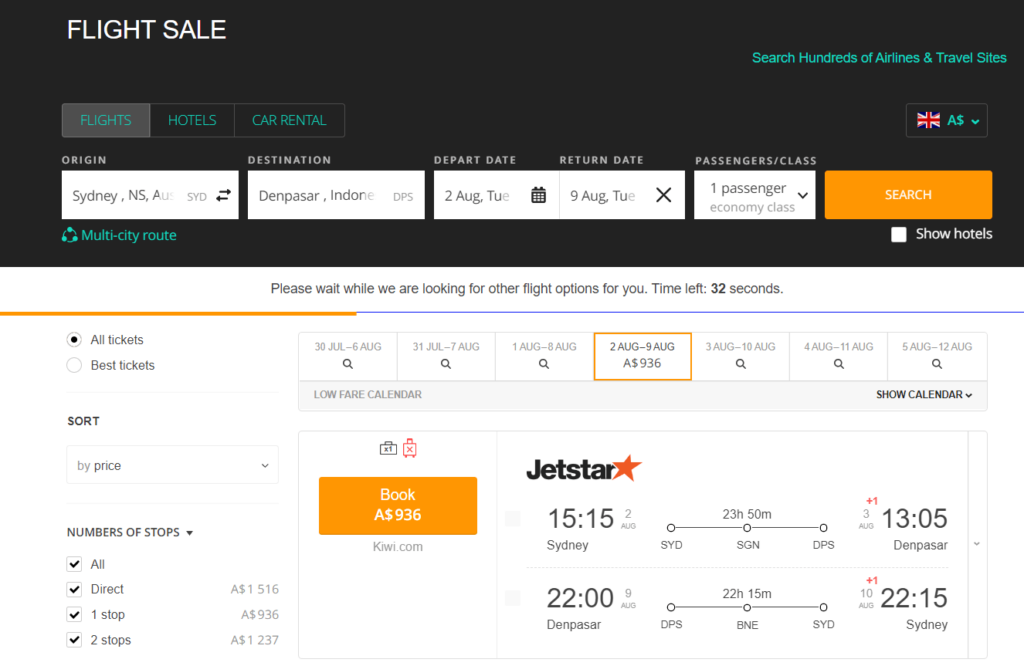How It All Began
Writing while traveling is my life goal, as I love both traveling and writing. There were some stumbling blocks along the way, but part of the journey was figuring out what it meant to be a travel writer and determining how I could make money with a travel blog.
When I was 11, my mother took me out of school for a year and we traveled around the world. We spent six months in Asia and five months in Europe. This experience completely changed my perspective and solidified my love of travel. At this point in my life, I’ve visited over 55 countries and love writing about my travels.
As part of my interest in travel, I’ve worked in many jobs in the travel industry, including as a travel agent and tutor teaching IATA airfares and ticketing. I’ve also helped tourism companies with online bookings and worked on a cruise ship. Right now, I have a full-time job managing a travel agency in Australia.
Everything that I’ve done has been focused on different areas of travel writing. Throughout the process, I have asked myself questions like: How does this work for me? Do I enjoy it? How can I make money from it? My lifestyle has led to some incredible opportunities that I had never seen for myself.
For years, people would tell me that I needed a blog. At first, I didn’t want to be too personal; however, once I started, I realized that readers don’t just want information, they want information from people who have actually been to a particular place and can share personal experiences.
My foray into blogging started with weekendnotes.com, a site where you can post articles about Australia and some other places and receive a share of the advertising revenue. At the time, I was exploring Sydney, going out to restaurants, visiting galleries, attending theater shows, and so on. I decided, why not write about what I do on the weekends and get paid for it?
I really enjoy producing a beautifully crafted piece of work. The kind of work that gives me goosebumps when I read it because it’s inspiring or reminds me of being in a certain place. Basically, my background in travel and my innate love of writing led me down the path of becoming a travel blogger.
I started the blog because I had published a book and needed somewhere to advertise it (along with my photography). I chose WordPress because they had the capability to host podcasts. My current blog grew from that.
Even though websites weren’t necessarily making money at the start, I still kept producing content. Because it was something that I believed in, enjoyed, and wanted to do, the concept of how to monetize the project was always in the back of my mind.
How to Make Money Writing Travel Content
Having your own personal blog is the main option. You work for yourself and can earn money by advertising or selling services, such as flight tickets through Travelpayouts. Nonetheless, if you do not have your own website, there are still several ways to make money writing travel content:
- Write it for others and receive a one-time payout ($200-$300 per article)
- Post your articles on a platform that shares its revenue ($10-$12 per 1,000 views)
I have tried both approaches. For a while, I worked as a copywriter and produced content for an environmental company, including content for their social media.
WeekendNotes is a platform that is similar to Medium.com, but is solely related to travel and works on a revenue I also regularly write for WeekendNotes, which is a platform similar to Medium.com, but is solely related to travel and works on a revenue sharing model. Editors also offer bonuses for quality articles and backlinks. WeekendNotes is aimed at Australians, but it also covers other countries such as the US. Here is my profile:

Most freelance writers will write an article for a magazine or newspaper and get paid with a one-off fee. In the revenue sharing model, you still get paid even if the article becomes old.
Some articles written over 5 years ago are still generating income as long as you’ve got quality articles that are evergreen. For example, people are always looking for certain things, such as a list of the best parks or walks-topics that don’t change much.
As long as you’ve got articles that are always popular and rank well on Google, you’ll continue to earn money from them.
Thanks to WeekendNotes.com, I had the opportunity to stay in a tiny house and basically write a review of the experience. I was like, wow, I’m getting paid to stay at an accommodation and just write about my experience. For me, that was a real highlight because, whilst I had been able to get travel discounts as a travel agent, I was now earning money based on my words and photos. That meant so much to me because it brought me back to my dream as a teenager of wanting to be a travel writer. Now, I’m living that dream.
Each article on WeekendNotes receives a score from an editor based on original content, good photos, how much they have to edit, and some other parameters. Once published, that article’s rank determines how much of the cost per 1,000 impressions you will receive. As a rough guide, each 1,000 views will earn you around $10 to $12.
As you can see, you need to get big numbers to make real money.
Key to my success with Weekend Notes was looking for common themes of the highest ranked writers and articles and incorporating those into my own articles such as quality images, personal experience, practical information and focussing on evergreen content.
Blogging Journey
Besides WeekendNotes, I have started a few websites of my own, including:
Travel Content
Thankfully, I can type quite fast. Most of my time while blogging is taken up by formatting, adding images, and other organizational stuff. I can craft a strong article out in about 40 minutes to an hour. I always proofread my own work as well as use writing aids. I want to make sure my grammar is spot on.
I feel like I have an advantage because my background comes from a wide range of travel industry experiences. Due to my role as a travel agent, I think in a sales-based manner and always consider possible buyers, which includes asking the following questions:
- What information do my visitors need?
- What would entice visitors to open the article and read through it?
- What would entice visitors to read further and click through?
There are many things that need to happen before you make your first sale. It’s all about making that journey as quick and seamless, but also as exciting as possible for the visitor.
When I’m creating travel content, I include some pretty pictures and make them easy to find for Google. I’m also adding a blurb based on my personal travel experience to make the article a bit more memorable.
For example, in the opening paragraph of an article about cheap flights to Italy, I included: “here’s a cheap flight to Rome, you can fall in love with a beautiful Italian, eat gelato, and watch the sunset over the foothills of Tuscany.” It goes back to taking the extra 10 to 15 minutes to make your content worthwhile for the consumer.
There’s a lot of travel content that is based around copying other bloggers. Some bloggers write just for the sake of trying to get clicks, to make visitors see their ads, or for the purpose of creating more content.
If I’m going put in the effort to write an article, it’s generally because the topic is something I feel strongly about, something that I’ve experienced personally, or something I feel that others might want to learn from. If I’m going to produce something, I try to spend the extra 15 minutes getting all the details right and making sure that it’s something relevant to what I’m posting about.
When you are looking for topics, among other things, you can look at your competitors – it’s not a problem.
I’m not saying to copy everyone, because that’s not going to work. For example, if I’m reading an article about Fiji and there’s something that stands out, I might decide to write an article about it. This is something I learnt from my Journalism course – always look for a new angle to an old story.
Furthermore, you can always do a quick search to see who else has written about that topic. If most things have been written about already, there is likely very little that hasn’t been said. However, you still can find a niche that is different enough to make someone want to care enough to read it.
Monetization
I have money coming in today without me doing anything, but getting to this point takes time and effort. You need to build up content, followers, and rankings on Google. It doesn’t happen in five minutes.
From the beginning, I was writing about places that I’d visited and including simple direct links to the hotels I mentioned. A bit later, I came to the realization that I should be getting paid for these links. I investigated more approaches to affiliate marketing and came across Travelpayouts. I liked the concept of getting paid for recommendations and, now, I’ve proved that it can work.
Join the Travelpayouts Partnership Platform
Access exclusive tools and the best travel partner programs, including flights, hotels, car rental, insurance, tours and activities, all in one place.
Join TodayI learnt website coding through freecodecamp and even though my technical ability is limited, I’ve proven the concept that affiliate marketing works. Even during lockdown, it was still earning me a couple of dollars a week. While this isn’t much, it was still something during a time when nobody could travel.
I used to spend hours and hours crafting the perfect story. However, I learned that this didn’t necessarily equate to a higher number of readers, clicks, or time spent on my website.
When I started focusing more on trying to generate revenue from affiliate marketing, it was often the posts that I spent 10 minutes on that generated the most clicks and income. That really changed my life.
When I create content, I make sure that I can potentially earn money from it. You should do everything you can to make it worthwhile for someone to click on your recommendations. You can improve your content by doing the following:
- Putting offers in front of their eyes
- Creating snappy headlines
- Creating even snappier intros or captivating images
Before Travelpayouts, I used some other affiliate programs. Once I discovered Travelpayouts, I learned that it is much easier to have everything in one place. I switched soon after. For example, I had an account with Agoda, but quickly got rid of it and used the account from Travelpayouts.
Having all my links in one spot and having access to accurate reporting were probably the most important things for me which Travelpayouts provided.
Seeing USD arrive into my PayPal account, on a regular basis from Travelpayouts along with their excellent support, gave me the confidence to push it to friends who also have travel blogs and to continue to offer Travelpayouts branded links to my content readers.
I do use a couple of other affiliate programs, like iTunes. For example, if I’m writing a blog post about Italy, I might include an Italian playlist there, just to make it more interactive, as long as it fits into the article.
I’ve delved into virtually any tool I could to make money online. I’m also selling merchandise that I create with Red Bubble which allows you to easily offer personally designed t-shirts, phone cases, stickers etc through Print-on-demand models. You receive the profits, they fulfill the order. Here’s one of my shops on Redbubble.
I haven’t sold links from my own websites. Maybe one day I’ll do that, but for the moment I’m just focused on generating content. Keeping the audience happy leads to growth, which is why I put extra effort into that kind of stuff.
How to Place Affiliate Tools
I earn on various travel services, which are pushed in the order of the travel buying process such as:
When I offer something for the readers, I always try to include more than just one option for each post. It’s wrong to expect that one link or banner is going to bring in the big money. It’s always a combination.
Choosing a brand to offer to the audience depends on the tools available and which company or website I feel is easier to work with. For example, there was an article that I did based on VRBO about the best accommodation options in Japan. I included direct links to that specific property. I chose the VRBO affiliate program, even though VRBO was a new supplier, because the brand:
- Had some interesting content
- Offered reasonable commissions
- Had some nice properties to work with
People are more likely to click the link if it’s something relevant to what they want. Usually, I say something like: here’s a great cheap deal, here’s the date it’s available, and here’s the booking link. In addition, people can click to check the availability of tickets and book a trip to their desired destination.
Once I’ve created a blog post about hotels in Japan, I can then reuse that and link it to any future cheap flight blog post mentioning Japan for example.
Generally, I put affiliate links towards the top of my articles. If there’s something that I really want people to click on, I’ll put it in the second or third paragraph instead of the first to make it obvious that they should be clicking here. This approach allows the audience to see the link on the front screen whether they’re reading the article on a mobile phone, tablet, or computer. I use a combination of buttons, and links within content.
You should make the audience clear about why they are clicking. Moreover, they must believe that doing so will provide value to them and that the site they’re purchasing from is trustworthy. If they’re handing over their credit cards, your audience should know that nothing bad is going to happen.
Booking online is still not as easy as it should be. For example, there are so many websites. By using Travelpayouts, I have made the process easier with the limited developer skills and knowledge that I have as well as the tools available to me. So, I’ve created a flight and hotel White Label called book.flightsale.com.au:

White Label is one of my main affiliate tools. It’s a great tool, as there’s an element of customization that you don’t get with widgets.
In addition, on my White Label, I’ve got ads and I played around with banners as well. If someone’s not going to book, then I should at least leave something for them to click on. Generally, I find that more people click through the “Book Now” button than they would on an ad. With that said, the ads still get clicks.
Traffic
Most of the traffic on jadejackson.com.au is primarily organic. The audience comes from Google to read various travel articles. For flightsale.com.au the traffic comes from socials and organically. However, it’s important to make your site user-friendly through functional search. My blogs search works well to find specific content e.g. Japan.
SEO algorithms change over time, so you have to be adaptable. Moreover, there is no one-size-fits-all recipe for attracting lots of organic traffic, but here are a few basic thoughts to guide you:
- Look at who your competitors are and what they do. Look at which keywords they are using, if those keywords apply to you, and so on.
- Once something’s published, you can always go back and edit it. You can always make it better. You can always come back to it and make it new or fresh.
- Google itself provides a surprising amount of information. Google Trends is really handy to check destinations or to see if people are searching for business flights, traveling with kids, traveling as couples, and so on.
Before I ran my own website, I just had a basic understanding of how Google works and what things could help or hinder your website.
Writing for WeekendNotes taught me good SEO practices including article titles, keywords, images with alt tags, and so on.
I learned a lot along the way. Everything that I learned from jadejackson.com.au, I put straight into my next website: flightsale.com.au. I’ve even got plans for my third, fourth, and fifth website. It’s just a matter of finding the time.
One year, I decided to post content daily in June – 30 posts in 30 days. For example, I wrote about the best flight deals and my traffic skyrocketed. It’s a numbers game. The more traffic you have, the more exponentially your traffic will grow.
On jadejackson.com.au and flightsale.com.au, I put a lot of effort into ensuring that the pages loaded faster and were as user-friendly as possible.
Now that the borders are open and people are traveling again, I’ve noticed a huge increase in flight bookings. I’m currently scrambling, trying to make sure I’ve got new content to keep the momentum going.
As for social media, I use a variety, but tend to focus on the easiest to maintain plus those that allow links. WordPress can automatically share content to Facebook, Twitter, Reddit, Instagram, Pinterest and LinkedIn. However, I personally prefer Twitter, Reddit and Facebook.
Having big numbers is one thing, but all of those numbers are useless if they’re not your audience. When I started my blog, I only had 20 subscribers, then 50, then 100, etc. It’s enough if those people are clicking on the links and booking. Find your audience rather than trying to get millions of clicks.
Travel Podcasts
I started to make travel podcasts in 2005 and, over the years, determined some best practices:
- I generally pre-arrange my content before I start recording
- Even if it’s just a short topic and I know all that I need to ask, I’ll have all my questions written out
- The best approach is to share questions with the people I am interviewing so that everyone’s prepared
- Before I record a podcast, I have to read through all the questions to make sure I’m clear on everything I’m saying
- I am always checking to see if I can talk all the way through without making too many adjustments
The biggest thing about podcasting is, once you have a podcast, you get listed all over the Internet on different podcast directories. Today, it’s quite hard to get into the list of the top travel podcasts, but when I started in 2005, two to three months after the release of our first travel podcasts about the UK, we hit the top 10 on iTunes.
At the beginning, with the Jade Talks Travel Podcast, I only shared my stories, which surprisingly didn’t take up as many episodes as I thought. Then, I started looking for people to interview and it was far more interesting for me to listen to stories from other experts in the field.
I have interviews I’ve recorded that I’m currently editing and will release soon plus there’s plans to revitalize an old podcast about flights but these days, everyone has a podcast, so again it’s much harder to find your audience but if your content is niche and specific, your audience will find you.
Everything I do comes back to: What would I like to read? What would I like to listen to? Is that of interest to me as a traveler? Does that benefit me as a traveler? Does that make booking travel easier for me? And, if it works for me, will it work for other travelers?
Some of the traffic on my blog is actually from my podcast, as all of the episodes are linked to my website. So, the podcast is constantly generating traffic and revenue, as I included links to a dedicated Travelpayouts White Label.
You can find some of my podcasts on my website here.
Key Takeaways
- There are several ways to make money by writing travel content, including being a copywriter, writing on other sites to share advertising income, and running your own travel blog or travel podcast.
- Writing for others generates income. Posting on someone else’s website or on your own travel blog is a long-term source of income.
- Earning from a website takes time and effort. You will need to prepare content and put in the effort to promote that content, but then you can begin to earn income almost passively.
- Although you can receive income almost passively, blogging is an ongoing process. You must improve your website, update articles, replace affiliate links, etc.
- Google comes in handy when you are preparing new content. Google Trends provides a lot of information about the interests of your audience. For example, you can find out about the demand for business class or about the interest in a particular destination.
- When you are creating content, you can look at competitors. It’s not a problem. Analyzing competitors will allow you to understand best practices and improve your own content. But don’t copy directly, as that’s not going to work.
- When choosing affiliate programs, be guided not only by the commission rate, but also by what is best for your audience. For example, determine if the service is easy to book or if your audience trusts the brand.
- When you offer travel services to your readers, always try to include more than just one option. In Travelpayouts, you will find more than 100 travel affiliate programs in different niches, including flights, hotels, car rentals, insurance, and others.
- If you use White Label, you can also incorporate ads on the page. As a result, a visitor who does not end up buying a flight ticket or other service can at least click on an ad.
- Doing travel podcasts is harder than it used to be, but it’s still a good source of traffic for your travel blog. Podcast traffic continues to flow for a long time, even several years after publication.
—
Want to share your story? Travelpayouts welcomes all bloggers with any travel-related experience. Write to us at an@travelpayouts.com with the following subject: “Story for the Travelpayouts Blog”.




